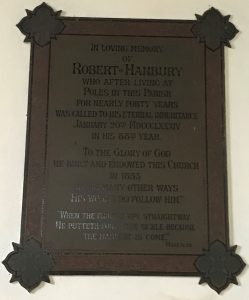Most of the ancient memorials, tombstones decorations and architecture of the Old Church were lost to demolition, neglect and vandalism, even continuing and threatened to this day.
However not all has not been lost in the last 170 years. Some of these items were moved to St Mary’s and can still be seen there today.
We hope that with this guide visitors and historians will take an opportunity to visit St Mary’s, see these items for themselves and get a little insight into the people and places of the history of the Old Church.
Maps can be found in the two official links below. From the recommended Youngsbury circular walk, St Mary’s church is a 5 minute, 500m walk up the hill from Wadesmill bridge/Ermines stores, past Thundridge Village Hall and turning left into the churchyard at the war memorial.
A detailed history of St Mary’s is beyond this post, but here are a few points of interest
In 1851 Robert Hanbury commissioned the new Parish Church of St Mary’s to be built at a cost of £4,000 overlooking the Rib valley on land bought from the Youngsbury estate and the new church was consecrated on 9th November 1853.
It was designed by Benjamin Ferrey (1810-1880) a nationally famous London based architect who designed over a hundred parish churches, including Holy Trinity in Bengeo which was built by the same contractors and opened two years later in 1855. He championed the Gothic Revival style and here, as in all his work, used medieval forms and styles especially inspired from the period 1280-1310, the beginning of the ‘Decorated’ period using ‘Geometrical’ tracery, with circles, trefoils and quatrefoils; all in a simple style.
It is notable for its position on a ridge overlooking Wadesmill, with the Hertfordshire Mercury noting ‘A more beautiful site could scarcely be imagined’ for the ‘handsome and commodious church which overlooks the vale’ and the Illustrated London news echoing its ‘most advantageous position’
Other than the artifacts moved form the Old Church, and its inherent architecture, some other items of interest, include
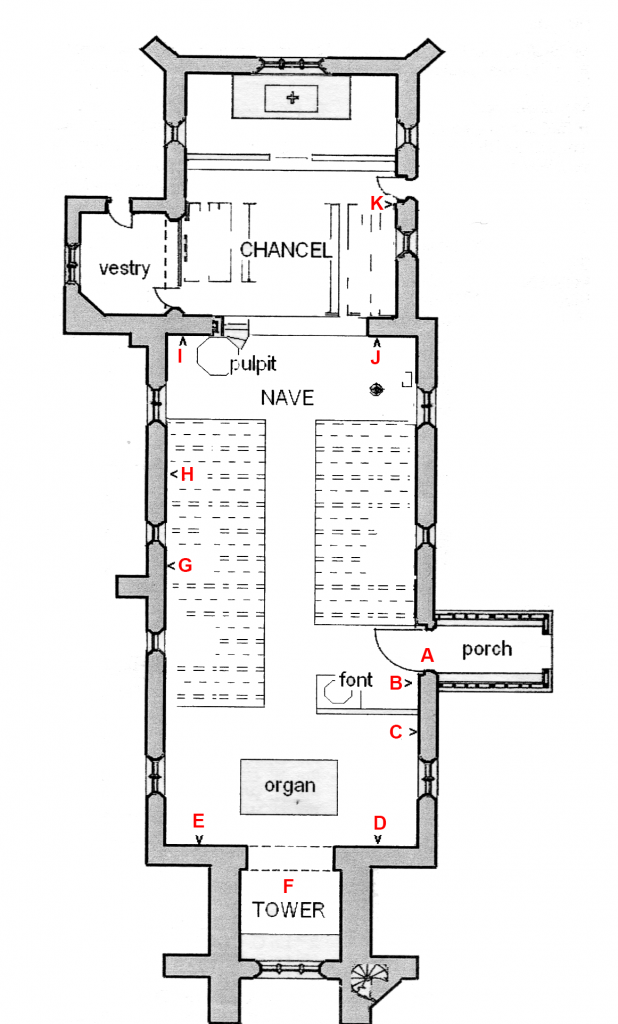
Entering the door of St Mary’s, over the doorway can be seen a set of Royal Arms made sometime between 1816 and 1837 (George III, George IV or William IV). These were transferred here in 1892 when they were set up over the chancel arch.
It is worth noting that it appears the tower and churchyard remained an active consecrated place of worship in this period, despite the ruin and rapid demolition of the chancel and nave. Burials continued there until 1882 with people preferring to be buried with meaning to themselves and their families. Important religious and decorative items as well as the internal structure of the tower, remained. The wooden door in the Norman arch in pictures around 1906 looks rickety but still lockable and reports from 1936 state pulpits and boards were still stored there for annual open air services. By contrast, Cussans in 1870 reports ‘ the entire churchyard, and the site of the building itself, is covered with a rank and luxuriant growth of weeds and briars’ and ‘There are other memorials in the churchyard, but they are for the most part so covered with moss as to be illegible’. Cussans is further moved to quote from a poem from 1750 originally inspired by the ruin of Minsden Chapel in Hitchin.
“See how silent now the desolated spot
Is this the place where numerous footsteps trod,
Where living votaries fill’d the house of God?
Where the full chorus of the sounding choir
Bade one loud strain of prayer and praise aspire?
How silent now the desolated spot,
Its paths untrodden and its use forgot!”
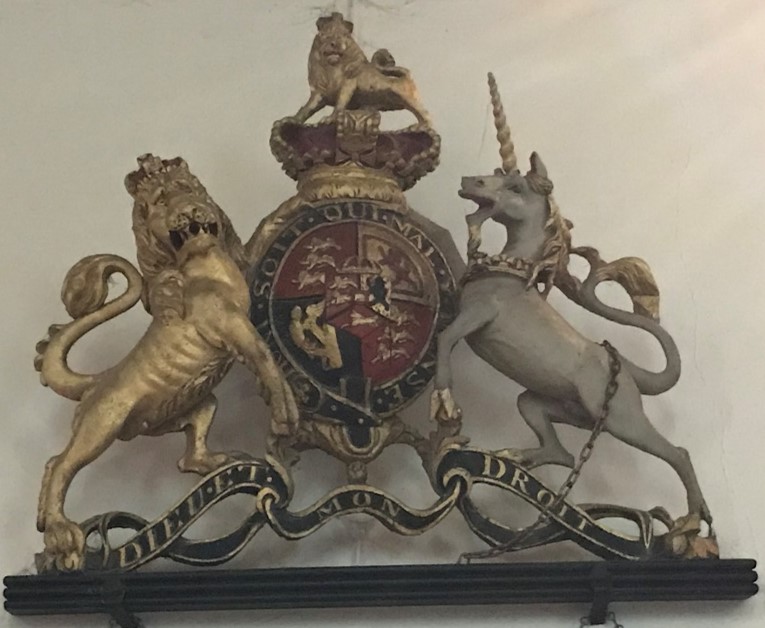
To the right of the door is a list of all the vicars of Thundridge going back to Tudor times, though the document itself appears to have been commissioned in the 1950s, judging by the calligraphy.
Above and to its immediate right is a marble plaque commemorating Edward Green (-1818) and his wife Elizabeth (-1850) by the prolific monumental mason J Bedford of Oxford Street.
A memorial did exist in the Old Church for Edward and his son Henry (-1824) but it seems likely this is lost and the present plaque commissioned for St Mary’s on the deaths of their children by one of John and Thomas Bedford who were running the business in the 1860s and 1870s, and therefore not likely to have ever hung in the Old Church.
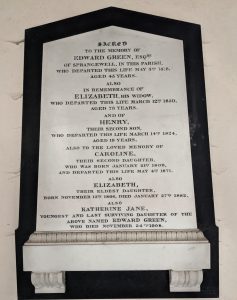
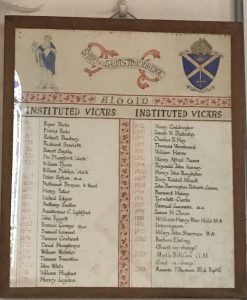
To the right and left of the tower arch are two plaques both from the late 1700s commemorating related families, both of which were originally located on the South wall of the nave in the Old Church
On the North side of the tower arch, an oval plaque with a winged cherub below, commemorates Francis Welles and his wife Martha who was the granddaughter of John GARDINER of Thundridgebury, through Sarah their daughter. This style of plaque was widespread in the second part of the 18th century but never common
On the South Side, behind the organ, a plaque commemorates Martha COWLEY (d 1786) daughter of Francis and Martha Welles, and therefore great granddaughter of John GARDINER from the same line
The Gardiner family are first recorded as being involved with the Old Church in 1510 when Thomas Gardiner of Rennesley Manor, Wadesmill willed ‘money for lights in the church of Allhaloen’ (The Old Church). Soon after they became owners of Thundridgebury Manor in 1543, when Robert Disny, who inherited from John Dive, who held Thundridge Manor in 1279, sold the property to John Gardiner. The tudor-styled house, with many alterations, remained the Gardiner family seat, albeit often occupied by relations and long term tenants like the Pettiwards and Hollingsworths, until its sale by Gilbert Gardiner, and demolition in 1811. Gardiner and Pettyward memorials and burials occupied the crypts in the Nave and Chancel of the Old Church.
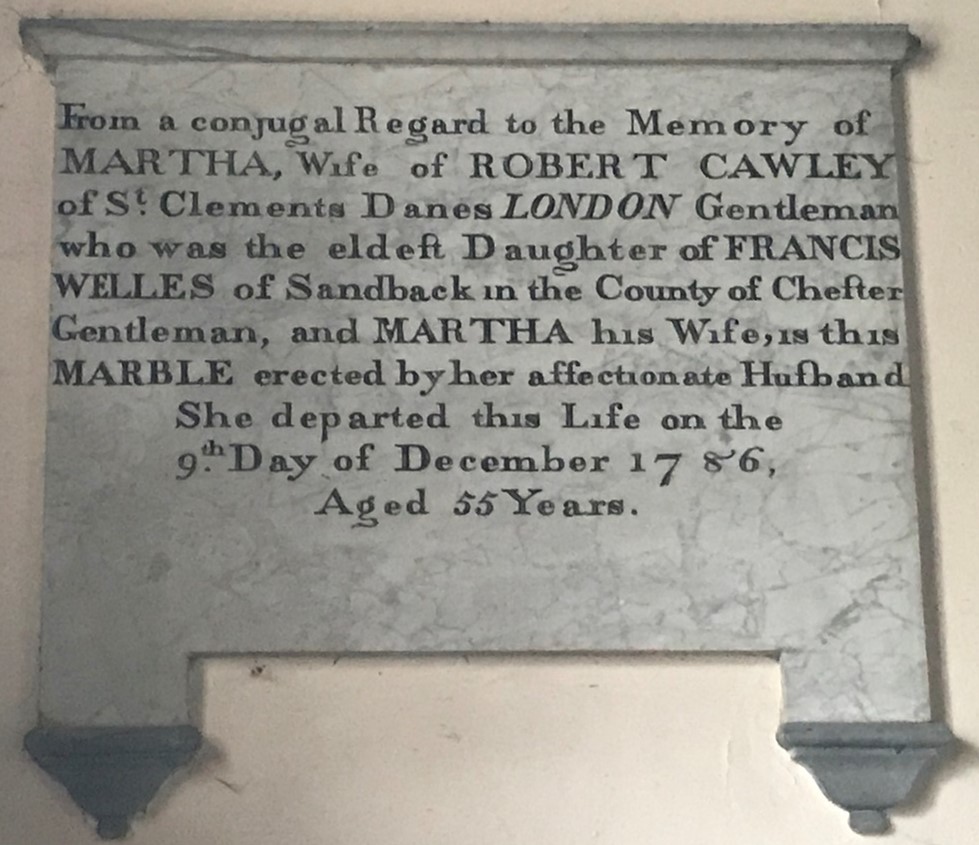
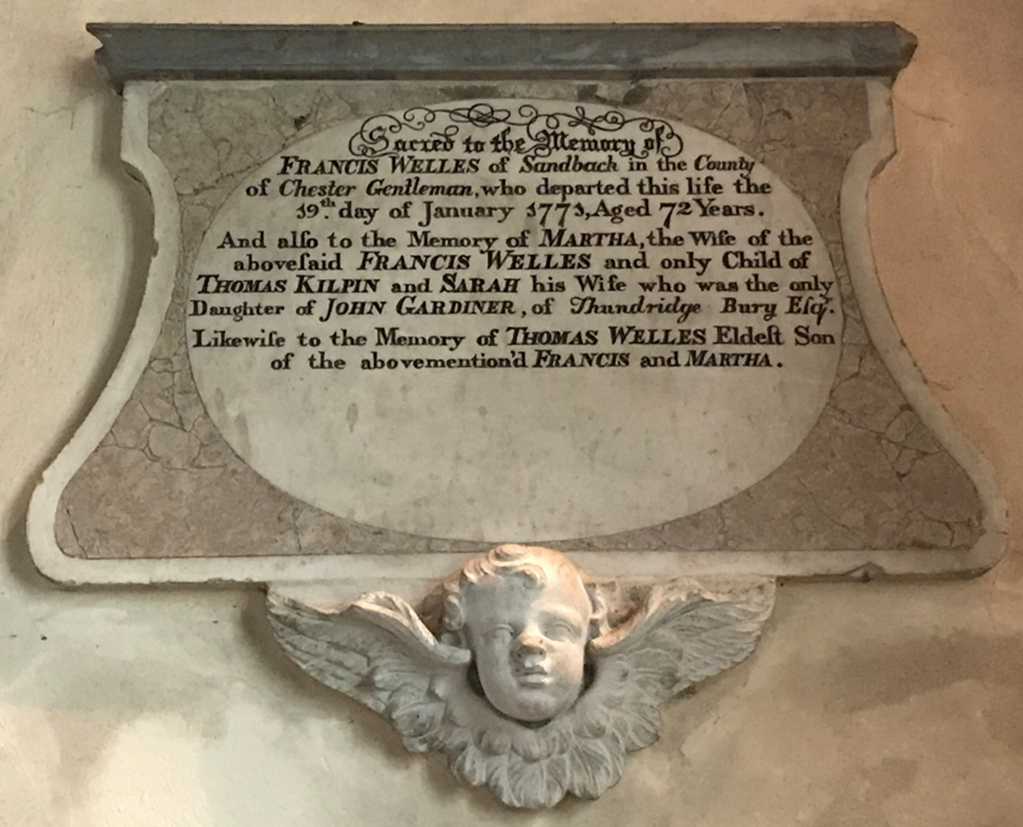
Whilst they cannot be seen or for the most part even heard, four bells of the six associated with the Old Church still
survive hanging in St Mary’s.

All four bells were installed in St Mary’s with wheels to be swing chimed, but the St Albans Diocese Inspector of Bells in 1993 concluded the delicate positioning of the bell-frame and the thinness of the tower walls meant that they were never intended to be rung full-circle. They were swung until about 1900, when Ellacombe chiming hammers were installed, which strike stationary bells (‘hung dead’) with hammers.
In living memory, all four were rung in the sequence 1324 before the Sunday evening service, which was the signal for the community to stop what they were doing and head to the church.
Around the 1960s the treble bell was overhauled by the Whitechapel bell-foundry, who quarter-turned it, hung it ‘dead’ (the bell does not swing to chime) and fitted it with a new lever-clapper. The other three bells were left as they were, awaiting restoration, and have not been rung since.
The Church Goods record from 1552 records that ‘Thundruge Steeple’ also had a Saunce Bell (aka
‘Saints Bell or Sanctus Bell’, rung ‘To signal that something supernatural was taking place’.
Records from 1886 also state that a 21” (53.3) bell hung at the Old Church inscribed ‘Osborne Founder Bishopsgate London 1853’. It had been commissioned as a toll bell for the continuance of funerals at the Old Churchyard in 1853. It is not known when or, for certain, to where this bell was removed.
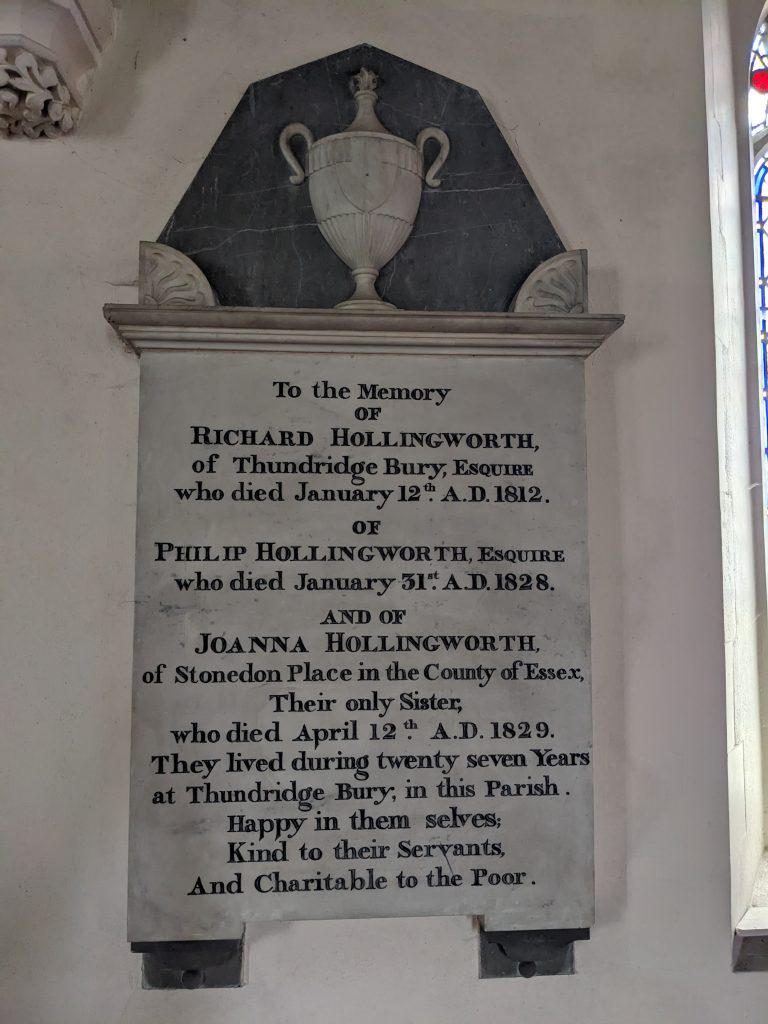 A marble plaque, with an urn at the top, commemorating Richard Hollingsworth and his brother and sister, who were the last tenants of Thundridgebury manor, adjacent to the Old Church, before it was sold to the Giles family who dismantled, sold and demolished it in 1811. This memorial, like that of the Green family, is likely to have been commissioned for the new church to replace the more extensive one that used to be in the Old Church. This also seems to have allowed the name to be misspelled.
A marble plaque, with an urn at the top, commemorating Richard Hollingsworth and his brother and sister, who were the last tenants of Thundridgebury manor, adjacent to the Old Church, before it was sold to the Giles family who dismantled, sold and demolished it in 1811. This memorial, like that of the Green family, is likely to have been commissioned for the new church to replace the more extensive one that used to be in the Old Church. This also seems to have allowed the name to be misspelled.
The plaque records ‘They lived during twenty seven years at Thundridge Bury in this parish, Happy in themselves, kind to their servants and charitable to the poor’
During their tenancy, the Gentleman’s magazine tells us in 1811 ‘Mr. Hollingsworth resided here about twenty-eight years, and made many elegant improvements, particularly in the plantations and grounds, which are well stocked, principally with stately firs of various sorts’
Richard was brought from Queen Square, Westminster to be interned in a new crypt at ’at the beginning of the middle aile when you enter from the South door’ i.e. the west end of chancel in the Old Church on his death in 1812, followed, presumably, by his siblings.
On the North wall of the old church a more extensive lost memorial recorded ‘To the memory of Richard Hollingsworth Esq who was the sixth son of Philip Hollingsworth, an opulent banker and is wife Sarah, third daughter of Jabez Collier, Esq. an eminent Solicitor and deceased on the 12th day of January 1812, having directed it to be inscribed upon his tomb that living in much enjoyment for 26 years at Thundridge Bury, in this parish, he was one of the latest inhabitants of that mansion which had subsisted form the reign of Henry the Eighth to that of George the Third, Kings of England, when it was demolished in the year of our Lord Christ 1811.’
This crypt was disturbed in the 1960s and 1970s and subsequently resealed.
Clearly both the tapestry and framed biography found here are modern, however Jane Wall herself (1530-1573) is buried at the Old Church and deserves to be much better known as the ‘the most notable benefactress of our Parish over a period of 400 years’
In 1548, in London, where he was a fish merchant, 37-year-old John Gardiner of Thundridgebury, married 18-year-old Jane Farnefold of Steyning, Sussex and she began her philanthropy with the gift of a collaret for poor brides of her hometown, to wear on their wedding days.
On her death in 1573, her brother-in-law Henry Gardiner inherited Thundridgebury, from who the estate passed to his son Edward to his daughter Elizabeth Gardiner, wife of cousin Simon Gardiner of London; and so the estate descended through the Gardiner family until 1811.
In her will, she ‘devised an almshouse in Wade’s mill, approx. 19 acres of land in Thundridge, approx, 4 acres in Great Munden for the benefit of the poor of this parish’. The original almshouses were replaced in 1774, and remain in Back Street.
In 1824, a strip of Jane Wall’s Charity Lands in Thundridge were sold for £150 to the Cheshunt Turnpike Trust to straighten the approach to Wadesmill bridge, by-passing congested Ermine Street which became known as Back Street. The net proceeds of this sale were stolen by the solicitor who escaped to Van Dieman’s Land (now Tasmania). Fortunately, the sum was replaced by Sampson Hanbury. The remainder of the land and the almshouses were exchanged in 1827 for less valuable land near Nobland Green.
In 1912 the trust fund stood at the equivalent of around £250,000, providing a yearly charitable provision of the equivalent of nearly £6,000 to clothe and provide bread tickets for 50 families, a parish nurse, educational scholarships and assistance to school leavers.
By 2004 the Jane Wall Charity Investment produced interest of just over £150, and a decade later was wound up with the proceeds used to buy a bench in Youngsbury Park and the balance given to local schools.
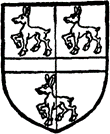 Flanking the chancel arch are two marble plaques that were both relocated from an impressive walled sepulchre adjoining the North face of the Old Church tower. Very little of this remains now other than the outlines. It contained three black flat tombstones of the Gardiner family with their arms deeply sculptured.
Flanking the chancel arch are two marble plaques that were both relocated from an impressive walled sepulchre adjoining the North face of the Old Church tower. Very little of this remains now other than the outlines. It contained three black flat tombstones of the Gardiner family with their arms deeply sculptured.
The memorial on the South side commemorates the death of John Gardiner in 1760 ‘to the inexpressible grief of his greatly afflicted widow Dorothy’. It also records their only child Gilbert who was four months old at the time.
Gilbert was later responsible for the sale of Thundridgebury manor to Daniel Giles in 1810, who in turn was responsible for its destruction, but Gilbert was still interred at the Old Church with his mother, father and grandfather in 1814, dying in London ‘without issue’.
The memorial on the North side, once located below that of John Gardiner, is for Dorothy’s father. A more detailed record of his life and death was recorded on the sepulcher floor, which tells us that he ‘at his request was interred in this place by his eldest daughter Dorothy’
A final lost memorial recorded twenty years later in 1793 that Dorothy Gardiner, then a widow for 33 years, ‘joyfully exchanged this world for the celestial regions’ aged 70
Here also were various combined arms of Gilbert, Gardiner and Cooper families including such devices as ‘an armed leg’ ; ‘three griffins heads’ ; ‘three owls of the field’; ‘three battle axes; ‘a bear rampant’ and ‘a lion rampant’.
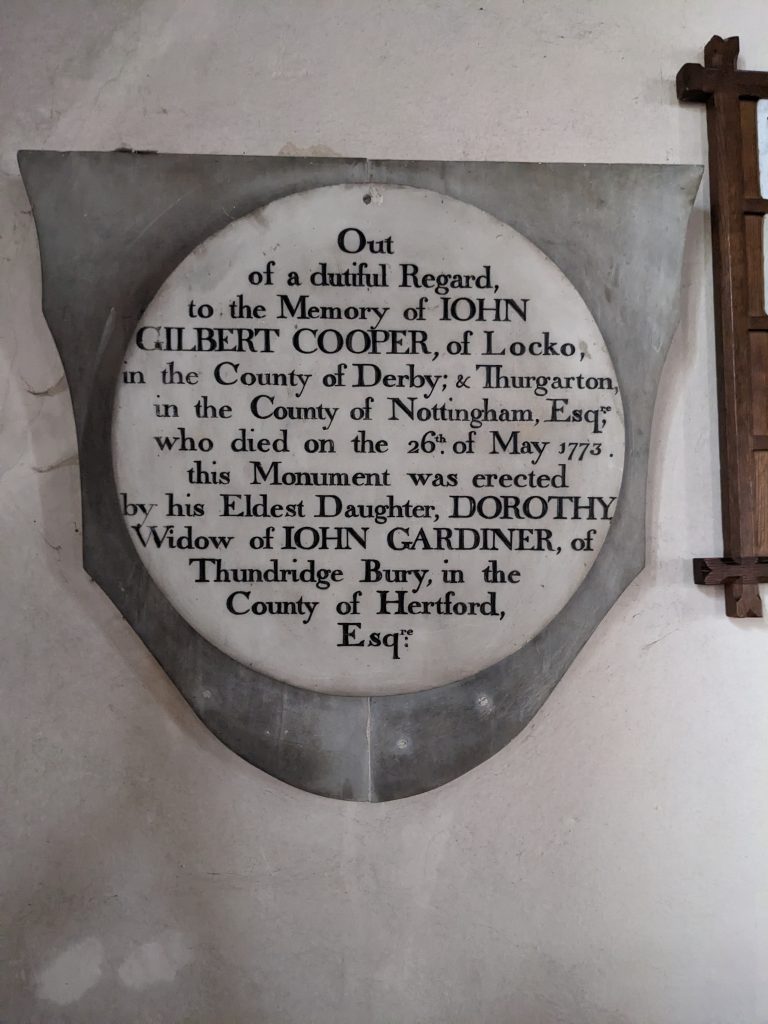
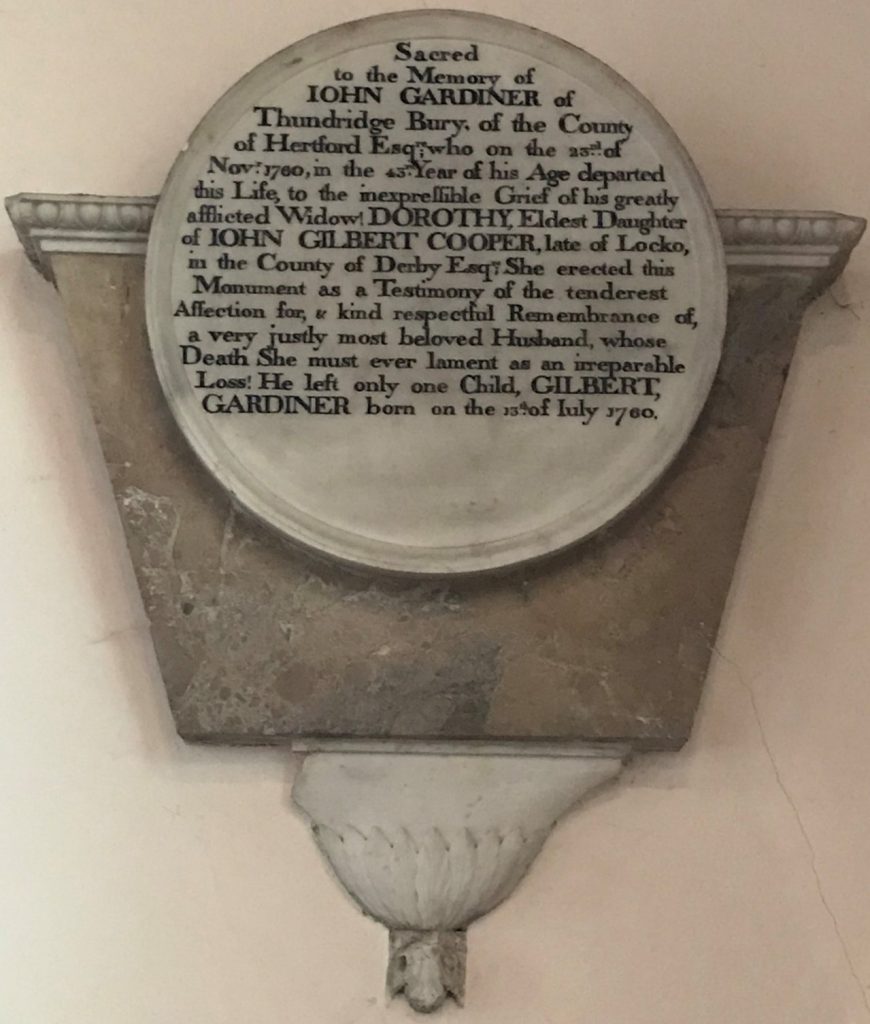
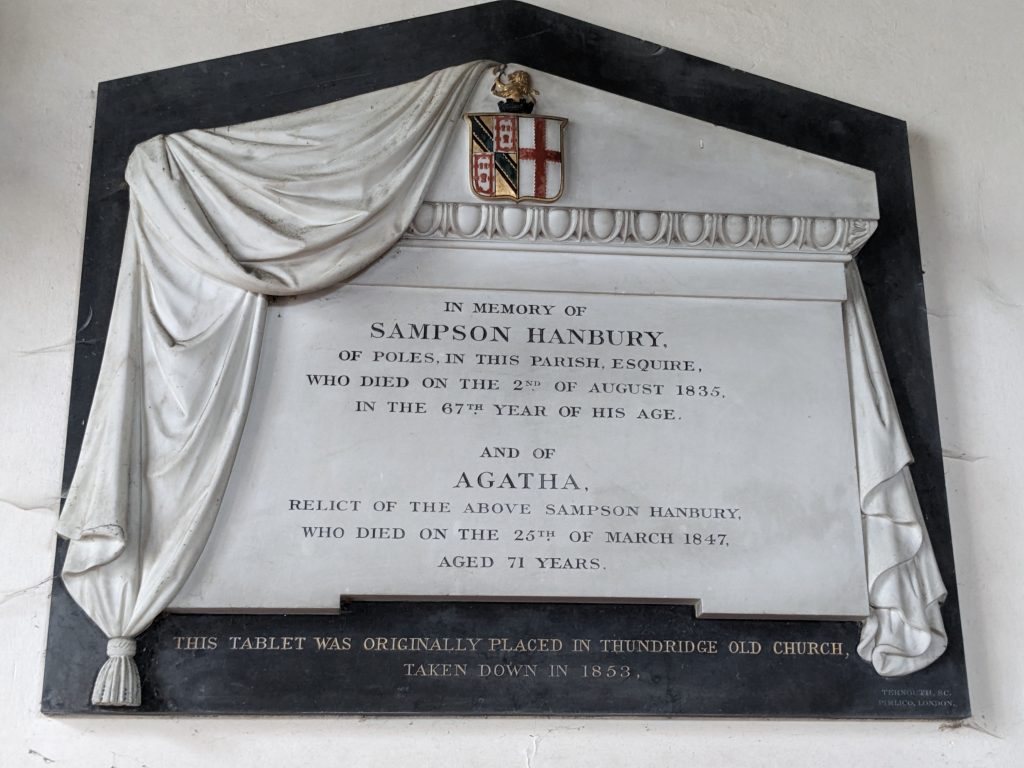 Above the priest’s door in the chancel is a plaque by John Ternouth of Pimlico (1795-1849) who made the bronze relief of the battle of Copenhagen at the base of Nelsons Column and whose work can also be seen in Sawbridgeworth and Great Halllingbury churches.
Above the priest’s door in the chancel is a plaque by John Ternouth of Pimlico (1795-1849) who made the bronze relief of the battle of Copenhagen at the base of Nelsons Column and whose work can also be seen in Sawbridgeworth and Great Halllingbury churches.
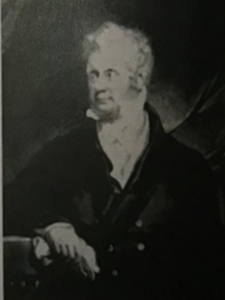 The plaque commemorates Sampson Hanbury (-1835) and his wife Agatha (-1847), uncle and aunt of Robert, who built St Mary’s. Sampson was the first member of the family to occupy Poles, with Robert after him for 40 years, having previously been rejected as a tenant of Thundridgebury in 1810. Poles was demolished and rebuilt in 1891 by Robert’s grandson Edmund at the instigation of his wife Amy and is now known as Hanbury Manor.
The plaque commemorates Sampson Hanbury (-1835) and his wife Agatha (-1847), uncle and aunt of Robert, who built St Mary’s. Sampson was the first member of the family to occupy Poles, with Robert after him for 40 years, having previously been rejected as a tenant of Thundridgebury in 1810. Poles was demolished and rebuilt in 1891 by Robert’s grandson Edmund at the instigation of his wife Amy and is now known as Hanbury Manor.
Finally, to the right of Sampson Hanbury’s memorial we cannot avoid acknowledging the large Metal Wall plate in memory of Robert Hanbury (-1884) who’s philanthropic work had a huge effect on Ware and Thundridge and beyond, and without who the history of the Old Church would have been so fundamentally different.
